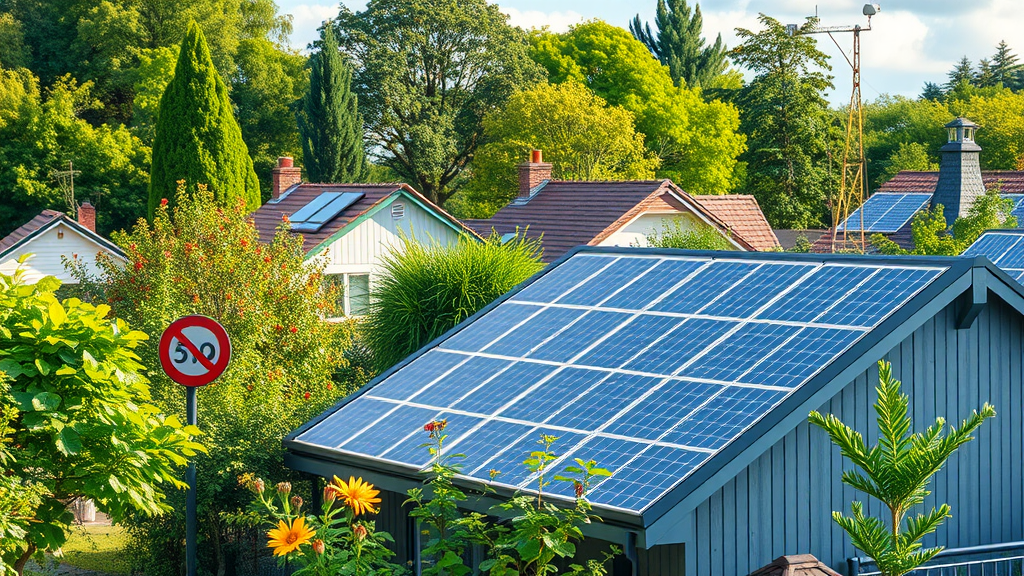Physical Address
304 North Cardinal St.
Dorchester Center, MA 02124
Physical Address
304 North Cardinal St.
Dorchester Center, MA 02124

Integrating solar panels into greenhouse environments represents an innovative approach to sustainable agriculture and renewable energy production. This strategy offers multiple benefits for farmers and agricultural businesses seeking to optimize their energy usage and reduce operational costs.
Greenhouse owners can effectively install solar panels through several strategic methods. These installations can be designed to work seamlessly with existing greenhouse infrastructures, providing dual functionality of energy generation and crop protection.
When implementing solar panels in greenhouse settings, farmers must consider several critical factors. Panel placement, light transmission, and overall structural integrity become paramount in successful implementations.
Modern solar technologies have evolved to provide specialized solutions for greenhouse environments. Manufacturers now develop semi-transparent photovoltaic panels that allow partial light transmission, enabling simultaneous energy generation and crop cultivation.
Check out one of the top rated solar panel kits here – https://www.healthrefreshed.com/offgrid-solarkits
| Panel Type | Light Transmission | Energy Efficiency |
|---|---|---|
| Standard Opaque Panels | 0% | 18-22% |
| Semi-Transparent Panels | 30-50% | 10-15% |
Solar panel integration in greenhouses offers substantial economic advantages. Farmers can generate electricity while maintaining agricultural production, creating a symbiotic relationship between renewable energy and food cultivation.
Despite numerous benefits, greenhouse solar panel installations require careful planning. Factors like initial investment, maintenance requirements, and technical complexity must be thoroughly evaluated.
For comprehensive guidance, consider consulting these specialized resources:
By strategically integrating solar panels, greenhouse operators can transform their facilities into sustainable, energy-generating ecosystems that contribute positively to environmental conservation and agricultural productivity.
Check out one of the top rated solar panel kits here – https://www.healthrefreshed.com/offgrid-solarkits
Integrating solar technology into agricultural structures presents a groundbreaking approach to enhancing energy efficiency and sustainability in farming operations. Modern greenhouse environments offer unique opportunities for solar panel installations that can revolutionize how farmers generate and consume electricity.
Greenhouse owners can strategically implement solar panels through several innovative methods. Transparent and semi-transparent photovoltaic technologies allow light transmission while simultaneously generating electrical power. These specialized solar solutions enable farmers to maintain crop growth environments while producing renewable energy.
Solar integration in agricultural structures delivers multiple benefits beyond energy generation. Farmers can significantly reduce operational costs, decrease carbon footprints, and create additional revenue streams through excess electricity production. The dual-purpose approach maximizes land utilization and promotes sustainable agricultural practices.
| Greenhouse Size | Estimated Annual Energy Savings |
|---|---|
| Small (500 sq. meters) | $3,000 – $5,000 |
| Medium (1000 sq. meters) | $6,000 – $10,000 |
| Large (2500 sq. meters) | $15,000 – $25,000 |
Successfully implementing solar panels in greenhouses requires careful planning. Farmers must consider factors such as:
Check out one of the top rated solar panel kits here – https://www.healthrefreshed.com/offgrid-solarkits
Emerging photovoltaic technologies like bifacial solar panels and transparent solar cells offer promising solutions for greenhouse applications. These innovations capture sunlight from multiple angles while maintaining crop-friendly light conditions.
Maximizing solar panel efficiency in greenhouse settings involves strategic positioning and technology selection. Farmers should collaborate with solar engineering professionals to design customized systems that balance energy production and agricultural requirements.
For further insights, explore these specialized resources:
By embracing solar integration, agricultural operations can transform traditional greenhouse environments into efficient, sustainable energy-producing facilities. The convergence of renewable energy and agricultural technology represents a significant step toward more resilient and environmentally conscious farming practices.
Check out one of the top rated solar panel kits here – https://www.healthrefreshed.com/offgrid-solarkits
Integrating solar panels into greenhouse environments represents a groundbreaking approach to sustainable agriculture and renewable energy production. By strategically leveraging these innovative technologies, farmers and agricultural professionals can simultaneously address energy needs and optimize crop production. The synergy between solar panel installations and greenhouse structures offers transformative potential for reducing operational costs and minimizing environmental impact.
Agricultural sustainability hinges on creative solutions that maximize resource utilization, and solar-integrated greenhouses epitomize this forward-thinking approach. The dual-purpose nature of such systems allows farmers to generate clean electricity while maintaining optimal growing conditions for their crops. Advanced solar panel configurations can be designed to provide partial shade, potentially benefiting certain plant species that thrive under controlled light exposure.
Technological advancements continue to make solar greenhouse integration more accessible and efficient. Emerging photovoltaic technologies, including transparent and semi-transparent solar panels, are expanding possibilities for seamless energy generation within agricultural settings. These innovations promise to revolutionize how we conceptualize energy production and crop cultivation.
Farmers and agricultural entrepreneurs who embrace solar panel integration in greenhouses position themselves at the forefront of sustainable agricultural practices. The economic and environmental benefits are compelling – reduced energy expenses, decreased carbon footprint, and enhanced agricultural productivity. As renewable energy technologies evolve, solar-powered greenhouses will likely become an increasingly standard approach to modern, eco-conscious farming.
The future of agriculture is green, efficient, and increasingly powered by innovative solar solutions that transform traditional greenhouse operations into smart, sustainable ecosystems.
Check out one of the top rated solar panel kits here – https://www.healthrefreshed.com/offgrid-solarkits